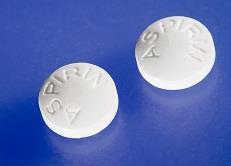Revision of chromatography ideas introduced pre-16 could be useful
Emphasise the ability of chromatograms to identify substances from very small samples.
Apparatus
- Thin-layer chromatography plate and a pencil (not a biro or felt tip pen)
- Test tubes in a stand x 4 (& method of labelling the test-tubes)
- Capillary tubes for use as micropipettes x 3
- Chromatography chamber. Either a screw top jar tall enough to take the tlc plate, a small beaker with a petri dish for a lid, or a commercial tank
- Access to a fume cupboard and short wavelength UV lamp.
Chemicals
- Ethanol
- Dichloromethane
- Access to a few iodine crystals (three or four per experiment is enough)
- Samples for testing
- Ethyl ethanoate as chromatography solvent.
Health, safety and technical notes
- Read our standard health and safety guidance here.
- Wear eye protection
- Ethanol is flammable, see CLEAPSS Hazcard HC040a
- Dichloromethane is harmful by inhalation. Avoid breathing vapour and avoid contact with skin and eyes, see CLEAPSS Hazcard HC028
- Iodine can be an eye irritant, see CLEAPSS Hazcard HC054.
- Ethyl ethanoate is volatile, highly flammable and the vapour may irritate the eyes and respiratory system. Avoid breathing the vapour and avoid contact with the eyes. Keep away from flames. See CLEAPSS Hazcard HC043a.
Method
- Make sure that you do not touch the surface of the tlc plate with your fingers during this activity. Handle the plate only by the edges and use tweezers if possible.
- Take a tlc plate and using a pencil (not a biro or felt tip pen) lightly draw a line across the plate about 1 cm from the bottom. Mark three equally spaced points on this line.
- Place small amounts (about 1/3 of a spatula measure) of your crude aspirin, your recrystallised aspirin and the commercial sample of aspirin in three separate test- tubes. Label the test-tubes so that you know which is which.
- Make up 5 cm3 of solvent by mixing equal volumes of ethanol and dichloromethane in a test-tube. Add 1 cm3 of the solvent to each of the test-tubes to dissolve the samples. If possible do this in a fume cupboard.
- Use capillary tubes to spot each of your three samples onto the tlc plate. Allow the spots to dry and then repeat three more times. The spots should be about 1–2 mm in diameter.
- After all the spots are dry, place the tlc plate in the developing tank making sure that the original pencil line is above the level of the developing solvent – ethyl ethanoate. Put a lid on the tank and allow to stand in a fume cupboard until the solvent front has risen to within a few millimetres of the top of the plate.
- Remove the plate from the tank and quickly mark the position of the solvent front. Allow the plate to dry.
- Observe the plate under a short wavelength UV lamp and lightly mark with a pencil any spots observed.
- Carefully place the plate in a jar or beaker containing a few iodine crystals. Put a cover on the jar and warm gently on a steam bath until spots begin to appear. Do this in a fume cupboard if possible.
Questions
- Write a short paragraph explaining why some substances move further up the tlc plate than others and how the results are made visible.
- What conclusions can you draw about the nature of the three samples tested?
Answers
- Separation of substances is based on the many equilibrations the solutes experience between the moving (ethyl ethanoate) and stationary (silica) phase. Less polar substances move more quickly than more polar ones. In general the stationary phase is strongly polar and strongly binds polar substances. The moving liquid phase is usually less polar than the adsorbent and most easily dissolves substances that are less, or even non-polar. The results are made visible by UV absorption or by chemical reaction with iodine.
- The recrystallised aspirin and the commercial sample should only show one spot with the same Rf value. Other spots should be seen in the crude sample.
Downloads
Using thin-layer chromatography to investigate the reaction - student sheet - pdf
PDF, Size 0.16 mbUsing thin-layer chromatography to investigate the reaction - student sheet
Word, Size 0.1 mbUsing thin-layer chromatography to investigate the reaction - teacher notes
Word, Size 69.29 kbUsing thin-layer chromatography to investigate the reaction - teacher notes - pdf
PDF, Size 0.13 mb
Additional information
These resources were compiled by David Lewis and edited by Colin Osborne and Maria Pack.
Aspirin book

This book contains eight free-standing activities that can be used singly or as a coherent package in a wide range of teaching and learning situations for both academic and vocational courses.
- 1
- 2
- 3
- 4
- 5
- 6
 Currently
reading
Currently
reading
Using thin-layer chromatography to investigate the reaction
- 8
- 9



































No comments yet